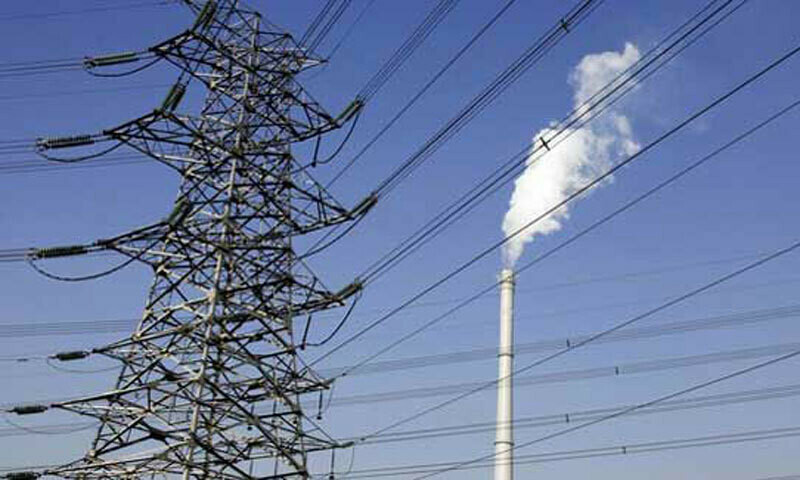• Govt expects to save Rs1.57tr by revising terms for four state-owned power plants
• Rs21.65bn savings projected this year alone • No explanation on how govt will manage its own revenue loss from these savings
ISLAMABAD: The government on Thursday projected savings of about Rs1.567 trillion through revised contract terms for four state-owned power plants with a combined capacity of 3,700MW, but was unable to clarify how the resulting revenue loss to the government would be managed.
During a public hearing called by the National Electric Power Regulatory Authority (Nepra), it also emerged that the two LNG-based power plants — together generating over 2,400MW — have operated without insurance cover since their commissioning in 2016.
Nepra Chairman Waseem Mukhtar expressed displeasure over this lapse, which has persisted for nearly a decade. He speculated that the government, as the owner of these plants, may offset its revenue loss by reducing subsidy allocations.
The government’s team, led by Central Power Purchasing Agency (CPPA) CEO Rihan Akhtar, said the revised terms of contracts would entail savings of about Rs1.57tr, including Rs21.65bn in the current year alone.
He said the revised terms are expected to lower per unit electricity costs by 25-32 paise, with average 30-year tariffs ranging between Rs9 and Rs12 per unit.
Mr Akhtar explained that the contract revisions cover four government power projects: the LNG-based Balloki and Haveli Bahadurshah plants (each around 1,220MW, with combined reported savings of about Rs1.1tr), as well as the 747MW Guddu and 510MW Nandipur projects (combined savings of Rs355 billion).
The savings come largely from reduced capacity charges and lower operation and maintenance costs.
He said the average tariff would become cheaper by Rs0.25 per unit for the Guddu plant, Rs0.32 for Nandipur, Rs0.27 for Haveli Bahadurshah and Rs0.26 for Balloki.
It was reported that revised terms for Balloki and Haveli Bahadurshah would become effective from Jan 1, 2025, while Guddu and Nandipur would be revised from Feb 1.
The request involves change in term of contracts from ‘take or pay’ to a ‘hybrid take and pay model’, reduction in rate of return and a cap on dollar indexation at Rs168.
Nepra announced that it had decided to discontinue dollar-based indexations for these plants, transitioning instead to rupee-based indexations fixed for the entire useful life of the power projects.
“This strategic revision aims to curb foreign exchange exposure and reduce tariff volatility for consumers,” it said, adding that it also capped the indexation for operations and maintenance (O&M) costs to 70pc of rupee devaluation, down from the previous 100pc.
Additionally, the return on equity (ROE) structure has been rationalised and the plants will now receive 35pc of the ROE as fixed, with the remaining 65pc linked directly to the actual operation of the plant — a significant departure from the previous 100pc guaranteed ROE model.
In their joint applications, the CPPA and GPPs have reported that negotiated settlement agreements (NSAs) were signed on April 8, following the federal cabinet’s formal agreement on March 19 to reduce consumer-end tariffs and alleviate the burden on the general public through a ‘hybrid take and pay’ model.
The applicants requested that Nepra waive the applicable tariff fees, citing national interest and consumer benefit. Under the NSA, key tariff components will be restructured, including the indexation of O&M.
The revised O&M costs will be indexed quarterly. Local and variable components will be adjusted at the lower of five per cent per annum or the actual average national Consumer Price Index (CPI) for the preceding 12 months.
For the fixed foreign and variable components, the current indexation mechanism will continue; however, rupee depreciation against the US dollar will be factored in only up to 70pc of the actual annual depreciation. In contrast, any appreciation in the rupee’s value will be fully passed on to consumers.
The return on equity (ROE) component shall be redetermined to a 13pc rate of return at the fixed exchange rate of Rs168 per dollar based on Nepra-determined quarterly indexation for the October-December 2024 period as a revised reference. Thereafter, there shall be no exchange rate indexation.
From the effective implementation date, the capacity purchase price (CPP) insurance component will be treated as a pass-through item, capped at 0.8pc of the sum insured under the power purchase agreements.
Under the NSA, the applicants agreed to implement a ‘hybrid take-and-pay model’, whereby tariff payment to the company shall be made by the CPPA as follows: from the effective date, prorated for remaining period of the current agreement year, and thereafter for every agreement year, the company will be entitled to 35pc of revised RoE components of tariff as part of the CPP.
From the effective date, in case the despatched and delivered net electrical output (NEO) of the company exceeds 35pc of the total contract capacity in terms of kilowatt-hours (kWh), then the company will be entitled to receive RoE components of tariff, which shall be calculated on the actual NEO exceeding 35pc of the total contract capacity in terms of kWh and the company shall claim the differential CPP accordingly.
Published in Dawn, April 25th, 2025


